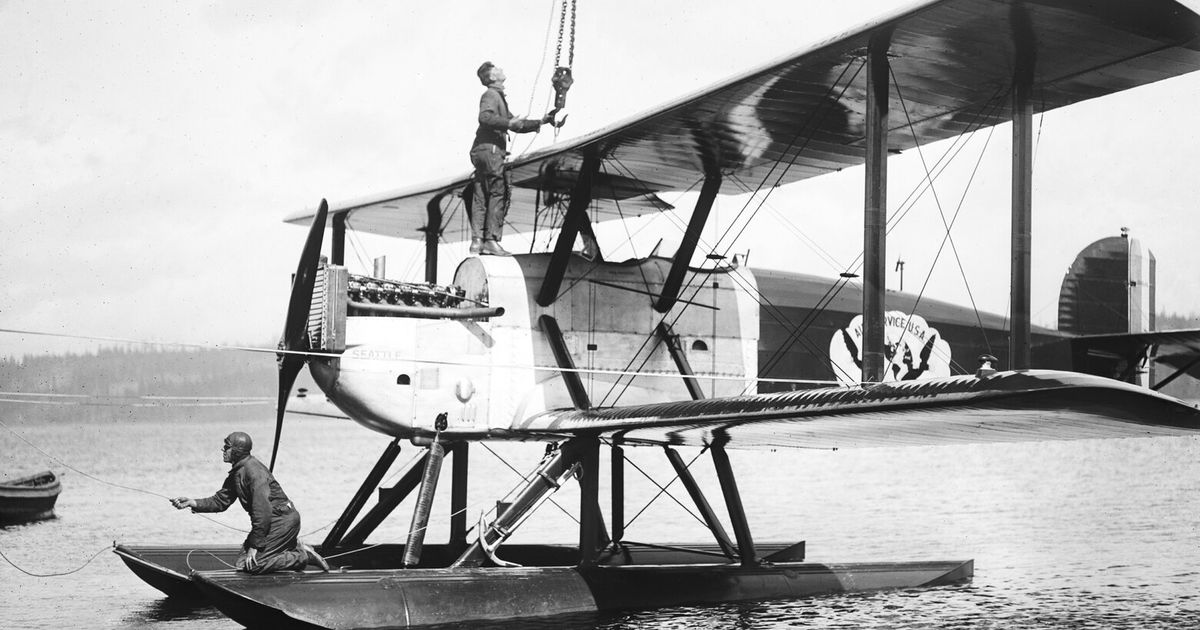Celebrating the First World Flight, from Seattle to Seattle in 1924
2024 marks the centennial year of the First World Flight, from Seattle to Seattle in 1924. The Friends of Magnuson Park group plans a six-month celebration. The First World Flight, a six-month U.S. military feat that began and ended in Northeast Seattle in 1924, began on April 6, 1924. The first pilots were Frederick Martin, Lowell Smith, Leigh Wade and Erik Nelson. The 175-day flight touched 22 countries and demonstrated aerial communication with all over the world. Despite two planes' losses, the Seattle and Boston crews survived. The flight returned to Seattle on Sept. 28, and the Friends of Magnuson Park group plans big events at Sand Point and the Museum of Flight around the return date.

Veröffentlicht : vor einem Jahr durch Clay Eals in Travel
CHARLES LINDBERGH, Amelia Earhart, the Wright Brothers. We all recognize those aviation icons and their deeds.
But what about Army pilots Frederick Martin, Lowell Smith, Leigh Wade and Erik Nelson? Their names have eluded cultural literacy, though they were the initial pilots leading the inaugural round-the-world voyage by air, a six-month U.S. military feat that began and ended in Northeast Seattle 100 years ago.
This weekend marks its centennial. On April 6, 1924, some 300 onlookers witnessed four two-seat, open-cockpit Douglas biplanes named Seattle, Chicago, New Orleans and Boston taking off from Sand Point Airfield. Using interchangeable wheels and floats for periodic landings, the armada headed northwest — clockwise, if you could eye the route from above the North Pole.
In this nascent era, among relentless complications, two planes perished. The Seattle crashed into an Alaskan mountain. Its two-man crew hiked five days through snow, holed up in a trapper’s cabin three days and walked one more day before their rescue and return home. The Boston sank near Iceland, replaced by a backup, the Boston II. The original Boston crew later joined the crews of the Chicago and New Orleans. The three planes eventually came full circle, landing Sept. 28 at Sand Point, greeted by an adoring crowd of 40,000.
The 175-day sojourn touched 22 countries; in some, planes had never landed before. The purposes, outlined by Major Gen. Mason Patrick, were lofty:
● Demonstrate aerial communication with “all countries of the world.”
● Prove flight as practical “through regions where surface transportation does not exist or at least is slow, dangerous and uncertain.”
● Show that aircraft could operate “under all climactical conditions.”
● Prompt aircraft to adapt to “the needs of commerce.”
● Showcase the “excellence” of American aircraft and byproducts.
● Honor America as “the first nation to finally circumnavigate the globe.”
Indeed, hope filled the air for the April 6 launch. “Seattle has an interest in the gallant effort of the Army airmen not felt by other cities,” The Seattle Times editorialized that day. “It is here that they make their adieus and receive the expressions of goodwill from an admiring city.”
The same hope imbues this year’s six-month First World Flight Centennial celebration. The Friends of Magnuson Park group plans big events at Sand Point and the Museum of Flight around the Sept. 28 return date. But fittingly, the party already has begun in the intangible air of the internet, with a “Follow the Journey” campaign on Instagram and Facebook.
“It’s a daily experience,” says Elisa Law, executive director, “to drum up global recognition and collective memory.” Through it, the Friends seek to unearth photos and other artifacts from the flight’s 74 worldwide stops.
As for Martin, Smith, Wade and Nelson? We could call them “The Boys in the Sky.” Hollywood, anyone?
